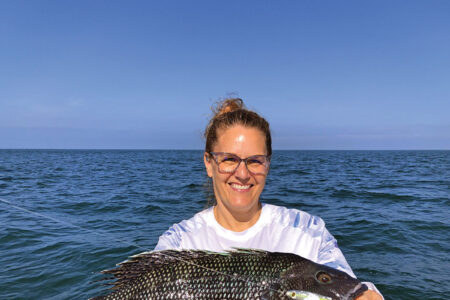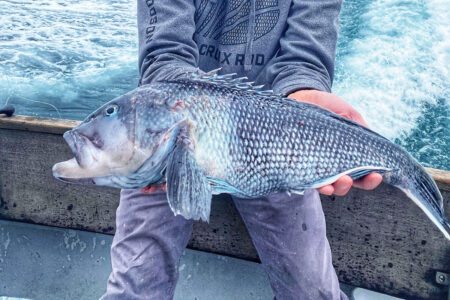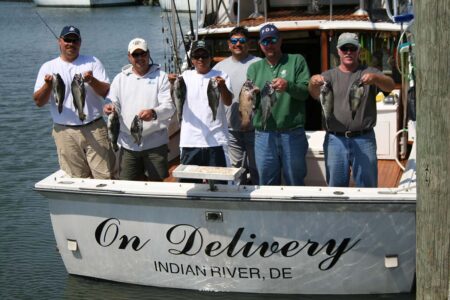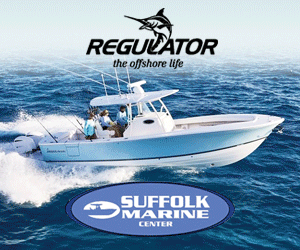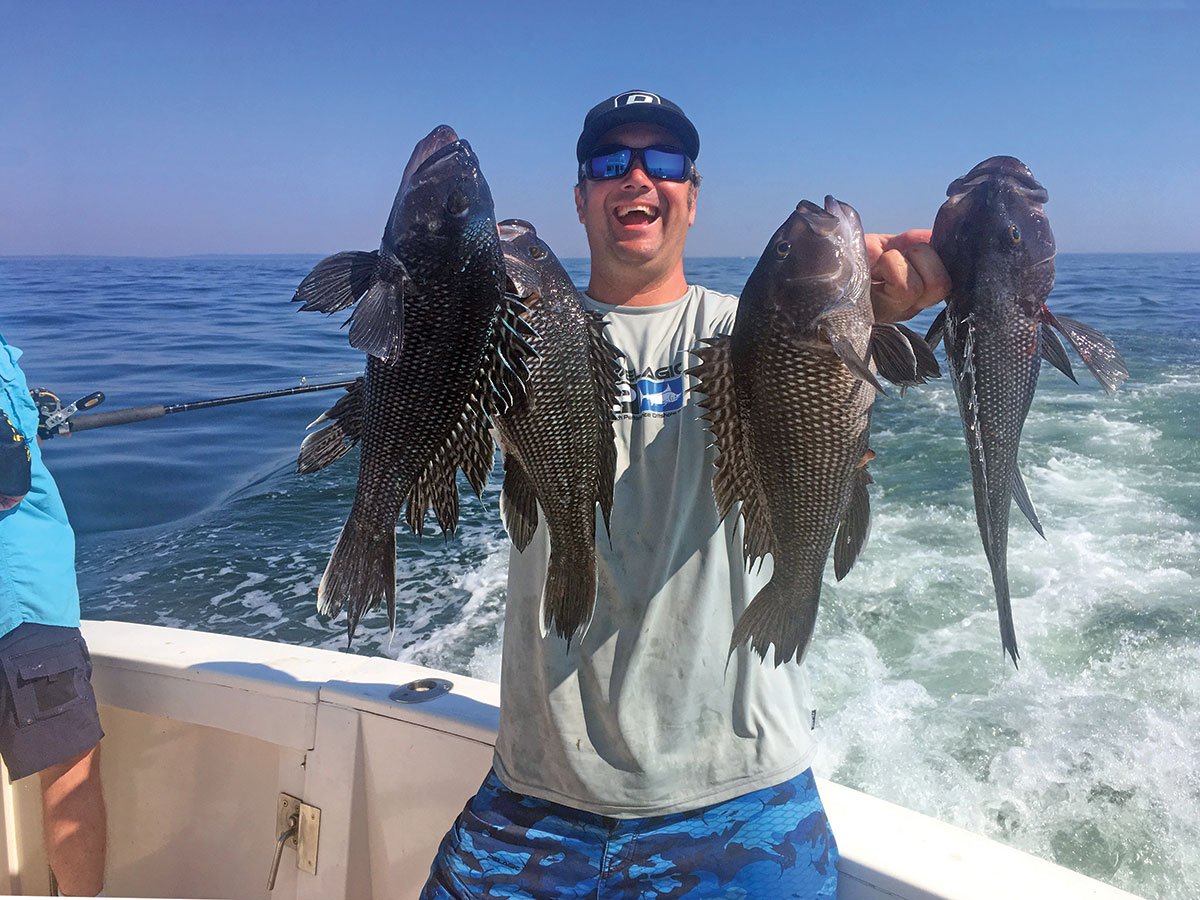 Black sea bass are a mobile species. Throughout the four seasons, they can virtually be found anywhere in the water column, depending on the time of year.
Black sea bass are a mobile species. Throughout the four seasons, they can virtually be found anywhere in the water column, depending on the time of year.
As we open the door into late fall and early winter, the biscuits are migrating to their offshore grounds around the deeper wrecks and rock piles on the continental shelf where they plan on wintering over for December through early March, but for the meantime, those midshore grounds in the 100- to 250-foot depths should still be hosting the bulk of the fish as they stage and move on out.
In November and early December, black sea bass will stick around waters hovering in the 50- to 60-degree range. Sea bass gravitate to wrecks and rockpiles to feed comfortably, and as the winter rolls on, move in an easterly and southerly direction. For November and December, there is plenty of opportunity for Northeast and Mid-Atlantic anglers alike to hit the humpback hot spots.
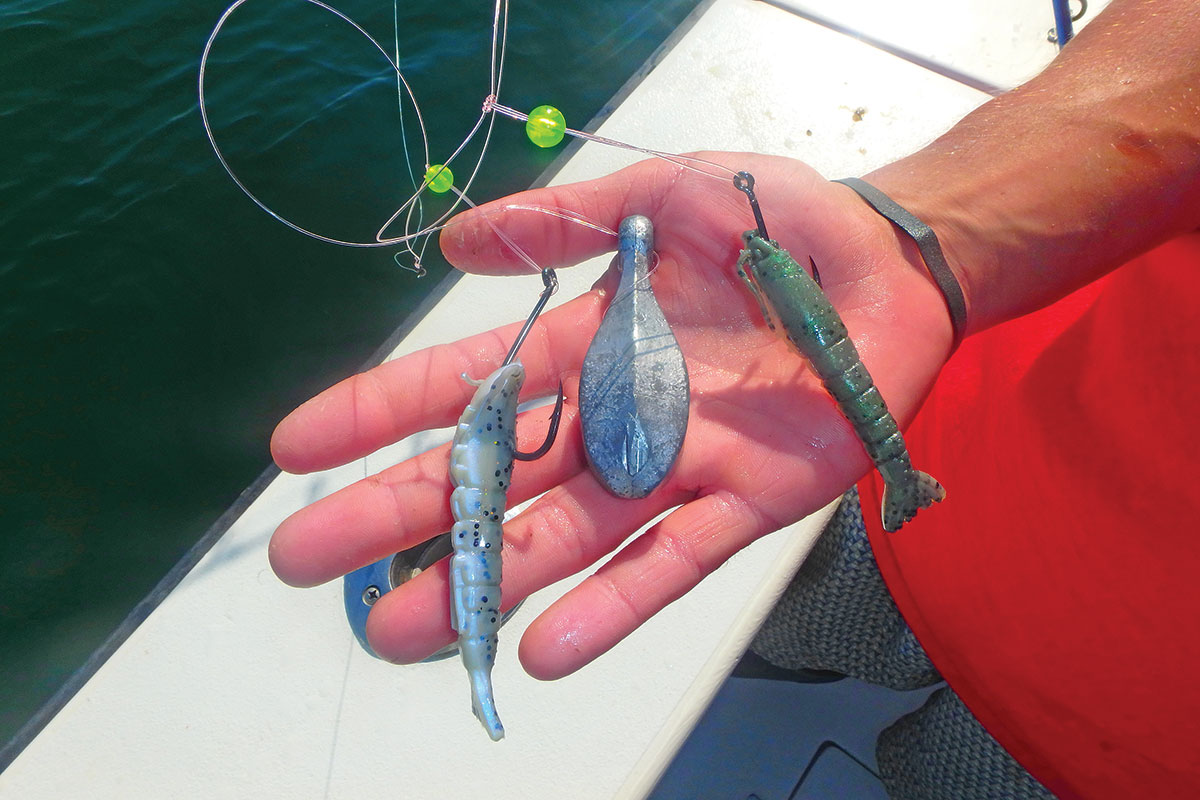 |
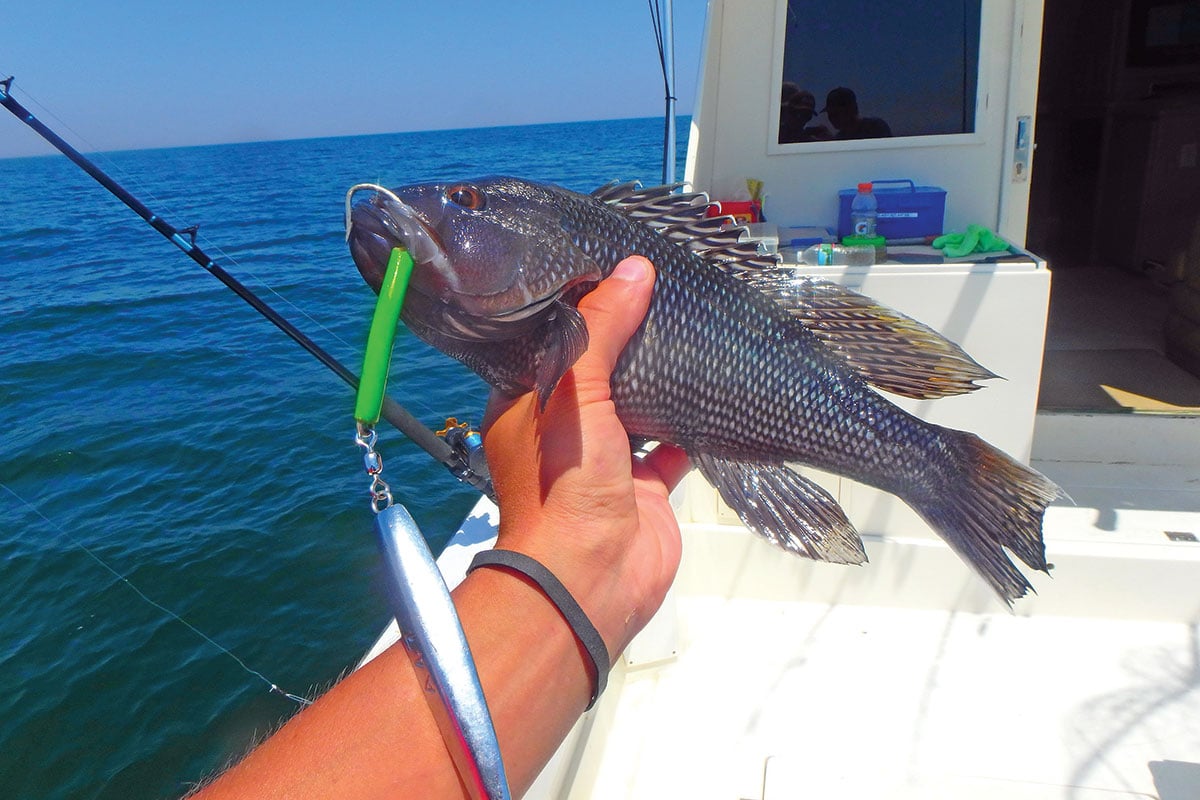 |
| The author’s standard bait rig (left) with beads for added flash and Gulp shrimp will get the job done, though for real Dream Boat humpbacks you might want to try the AVA jig and colored tail (right) approach | |
Battling Biscuits
Moving into the latter months of the year you want to set up with a little bit bulkier rod and reel combos as you may find yourself fishing in depths sometimes reaching over 300 feet with sinker weights that can reach over a pound. Generally for baiting up, a 7- to 7-1/2-foot medium to heavy power for backbone, moderate to fast action for some flex and hook-setting power, conventional rod rated for 20- to 50-pound works. Match that with something like a Shimano Torium 20 class reel spooled with 50-pound PowerPro braid, to which a 10-foot top shot of 50-pound TripleFish mono leader is Albright-knotted on. The mono leader is used for a little bit of stretch to get out of snags as well as to retie jigs and rigs on quickly upon a break off. When jigging, I set up with a 7- to 8-foot medium action moderate flex rod rated for 20- to 50-pound matched with a high speed Avet MXL reel.
Depending on your departure point, you could be making quite the run to get out to the sea bass grounds this month, so it’s best to pick your spot right. In the early part of the fall season, prospect and explore a few wrecks on the way out so you don’t over run the hordes of fish. In early October, the schools could be staging in 75 to 150 feet of water, just a short ride from port. Pick a snag and see if anyone’s home to start, then progressively work your way out to deeper water to find the packs.
Once you do get a few whacks, drop some fresh cracked clams down as chum to get them really on the chew. Once a bite gets started it should be hot and heavy. Look for the telltale “haystacking” of sea bass schools on the fishfinder as they come up like a pyramid from the sea floor up to 20 or 30 feet above the piece you’re fishing. Generally, same size sea bass tend to school together, so if you are catching dinks at one spot, you may want to shift or make a move to find pods of greater sized fish. For the most part, you will be anchoring on a wreck at this time of year to really work the structure over in a targeted approach.
Great Baits
It all starts with the right rig; and in my opinion, the more the merrier with regard to hooks. I employ a three-hook dropper rig consisting of a 72-inch section 50-pound Seaguar fluorocarbon leader, with three dropper loops/tag ends tied each 18 inches apart, with a 150-pound Spro barrel swivel at the top and a double overhand knot on the bottom to loop on an appropriate 6- to 16-ounce bank sinker. On the loops are size 3/0 to 4/0 Mustad baitholder #92641 hooks; but before the hooks go on, I slide on purple, red or green beads above the eye of the hook for added adornment. Sea bass are suckers for those beads.
On the business end of the hook, white, red, or orange Berkley Gulp twisty tail grubs from 3 to 6 inches long or even squid skirts can be lanced on. After that, select your bait. Generally, fresh clams are top baits, but be sure to cut them into streamlined tongues so they flutter in the current and do not spin uncontrollably. Also effective are 4- to 5-inch tapered squid strips, bergall strips, half green crabs, spearing and sand eels. Dunk and marinate any baits in FinEssence Oil a few hours beforehand to really get a stink going on the bait.
One solid tip to add when bait fishing – if you do get whacked by a sea bass, leave the rig down there and wait for the second and third hookup on the other two hooks before reeling in. After a few hits, you’ll be able to tell what’s a legit biscuit and what you can leave down there to wait for another hit.
Pig Jigging
Black sea bass is managed jointly by the Atlantic States Marine Fisheries Commission (ASMFC) and the Mid-Atlantic Fishery Management Council. The management program divides a total annual quota between the recreational fishery (51%) and the commercial fishery (49%). The recreational fishery is currently managed on a regional basis using a combination of minimum size limits, bag limits and fishing seasons to achieve a regional allocation of the recreational harvest limit. Although the black sea bass fishery was declared rebuilt in 2009, ASMFC said “the unique characteristics of the species (e.g., it is a protogynous hermaphrodite) contributes to uncertainty about the size of the stock.” In December 2018, managers approved measures aimed at enhancing the compatibility of state and federal regulations on black sea bass by allowing the use of conservation equivalency for recreational management starting in 2020. Conservation equivalency allows recreational management measures in federal waters to be waived, and instead requires recreational anglers to abide by the measures of the state in which they land their catch. Until regulations change for 2020, the following state-by-state regulations are in place for 2019:
CONNECTICUT: May 19-December 31, 5 fish bag limit, 15-inch minimum. For-Hire “Bonus” September 1-December 31, 7-fish bag limit, 15-inch minimum.
DELAWARE: May 15-December 31, 15 fish bag limit, 12-1/2-inch minimum.
MARYLAND: May 15-Dec.31, 15 fish bag, 12-1/2-inch minimum.
MASSACHUSETTS: May 18-September 8, 5 fish bag limit, 15-inch minimum.
NEW HAMPSHIRE: No closed season, 10 fish bag, 13-inch minimum.
NEW JERSEY: ay 15-June 22, 10 fish bag, 12-1/2-inch minimum. July 1-August 31, 2 fish bag, 12-1/2-inch minimum. October 8-October 31, 10 fish bag, 13-inch minimum. November 1-December 31, 15 fish bag, 13-inch minimum.
NEW YORK: une 23-August 21, 3 fish bag, 15-inch minimum. September 1-December 31, 7 fish bag, 15-inch minimum.
RHODE ISLAND: June 24-August 31, 3 fish bag, 15-inch minimum. September 1–December 31, 7 fish bag limit, 15-inch minimum.
True knuckleheads – sea bass pushing the 4- to even 8-pound mark – will most definitely hit baits, but are also the heavies of their local population and will bully other fish out of the way to reach larger offerings. Metal jigs put out the flash and profile of a large baitfish, which humpbacks find irresistible. For aggressive strikes in deeper waters, drop down heavy metals that can get to the bottom quickly and hold such as an 8- to 12-ounce hammered diamond jig, Vike jig, Ava A67 to A87 jig with red, green or black tails, or a Deadly Dick #4 Long.
Let the jig hit the seafloor and tap it on the ocean bottom, lifting only a foot off the ground and down. Sea bass will inspect and pounce on the shiny attraction with full aggression and many times the true trophy humpbacks of 5 to 8 pounds will have no will power to resist a strike. Don’t think swooping the jig in broad strokes, but simple taps on the bottom will get the attention of humpbacks.
Rigs are tied simply with a 50-inch section of 40-pound Seaguar fluorocarbon leader with a dropper loop up 36 inches from the jig. On the dropper, loop on a teaser that can consist of a 4/0 baitholder hook lanced with 6-inch Berkley Gulp grubs in red or greenish natural colorings or even slip on a squid skirt above the hook to garner attention.
Now that we have the sea bass season running on all cylinders, be sure to take full advantage of the migration, working over midshore and offshore grounds to fill the cooler. Don’t forget to target cod, pollock and maybe even a few fat ling as well when out on the wrecks and rock piles to maximize your time out.
